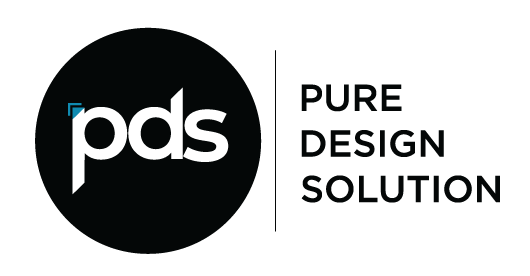Did you know 91% consumers are more inclined to shop with brands that provide them relevant recommendations and offers, and that 53% of millenial and Gen X shoppers feel personalization boosts their loyalty to a brand? Research also indicates 48% consumers leave a brand’s website due to poor personalization – they instead make a purchase from a competitor.
Welcome to the era of hyper-personalization – every consumer wants to feel special, on as much of a one-on-one level as possible. Thanks to technology, generating such experiences is possible. So, how does a digital marketer offer consumers the level of personalization they crave to improve brand loyalty, cultivate trust and boost sales? The answer is personalized user experiences through sophisticated segmentation.
Micro-Segmenting Consumers
Digital marketers are constantly collecting data (with the consent of consumers as per privacy laws). This data can range across a wide spectrum –
* age
* gender
* city
* which landing page a consumer entered through
* if they are a new or returning visitor
* past purchase history
* referral source, etc.
Drawing from these data points, digital marketers can create micro-segments – for example, all women in a particular city who purchased a particular eyeliner in the last quarter might be interested in other eye makeup product recommendations, or all consumers in particular regions who purchased a printer within the past number of months may have need for cartridges. This gives an opportunity to the marketer to personalize the message and create a deeper connect with his customers.
This concept of segmentation isn’t entirely new – 94% of marketers are already focusing on data analytics, customer profile management and technologies that enable personalization. 75% of enterprises are using AI and machine learning to truly enhance personalization – they have reported customer satisfaction increasing by over 10%.
Segmenting your audience upon multiple data points allows you to deliver customers the right types of experiences – including offers – at the right time through marketing automation tools seamlessly. Think of brands like Amazon, YouTube and Netflix.
Tips To Segment Effectively
While there are infinite ways in which you can segment your consumers, here are a few best practices we recommend –
* Collect solid data – your honey pots – such as forms – should be optimized to get the exact information you need. You can even allow audiences to self-segment – Penguin Random House, for example, allows subscribers to pick the book genres they like the most so they receive emails with suggestions that are relevant. Likewise, BuzzFeed empowers visitors to sign-up for newsletters that are related to content they enjoy consuming, such as a newsletter about cats if they clicked on an article about it.
* Organize data smartly – a strong CRM or marketing automation tool allows you to store and use your data safely.
* Segment wisely – Create different audience segments based on what is useful for your company – what sort of journey do you want to take different segments on and in what order and at what frequency?
* Plan campaigns thoroughly – This goes hand-in-hand with the point above – each segment should have a properly chalked out automated campaign that takes into account what they really want to hear from your brand and why. Based on careful segmentation, setting up automated triggers based on each action each segment takes, a seamless user experience can be created for customers that is meaningful and efficient. For example, automated drip email campaigns can be built that are personalized based on different demographics. Let’s say a particular clothing brand has customers in two drastically different climates – a different campaign can be built for each set, which can further be fine-tuned based on their previous purchase history and average order value/spend.
* Keep collecting data – Every time a customer keeps interacting with your brand, make sure you segment further through requesting additional facets of information.
Campaign Monitor’s research hints at a 760% increase in revenue through segmented campaigns – this alone should motivate you to embrace segmentation and personalization.
Importance of Dynamic Content
At the very essence of personalization based on segmentation is a rock solid content strategy – simply creating hyper-segments does not automatically yield results. More and more digital marketers are understanding the importance of dynamic content – content that changes as per the preferences of each audience segment, often in real-time. Why is dynamic content crucial? It makes the audience experience intuitive.
For example, if you’re ordering books in the Kindle store, you might notice that recommendations pop up based on what you’ve viewed or added to your cart to cross-sell. Or, that different slider images, call-to-actions and headlines show up on the same Website of certain brands, based on action steps a particular visitor takes. Even the order in which items appear on e-commerce pages can be modified based on personal histories and clicks to make the ranking relevant. Nowadays, many clothing e-commerce platforms showcase intelligent pop-ups with offers based on whether a customer hasn’t purchased what’s in the cart for a long time, as well – sometimes, automated emailers are triggered with special offer codes in real-time, such as free shipping if a cart is abandoned. In a nutshell, dynamic content helps establish a personal content through relevant content that is consistent and timely.
Micro-Segmentation & Hyper-Personalization Are Here To Stay
Consumers who form an emotional connection with a brand have a lifetime value that is 306% higher. Yet, research from Forrester indicates only 40% people believe they are receiving relevant information from retailers. Similarly, Acquia’s second annual customer experience survey indicates that 90% of customers think brands fail to meet their expectations regarding good customer experiences. Research also points that 75% of online consumers feel disappointed when Websites show promos, ads and offers that are not in-line with their interests.
Using the art of segmentation to personalize messaging and its delivery is the way forward. Consumers are spoiled for choices – so, curated content is a must. Even something as simple as a personalized subject line, according to Campaign Monitor, is 26% more likely to be opened. Personalizing Web customer experiences can result in a 19% improvement in sales. HubSpot indicates personalized CTAs result in 202% better conversion rates than default ones.
Interested in learning more? PDS has helped many businesses plan and execute digital marketing campaigns that are personalized based on in-depth segmentation and powered through ZOHO. To find out more, contact us right here.

